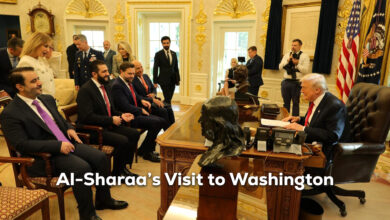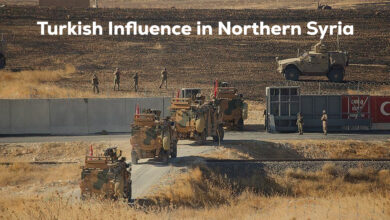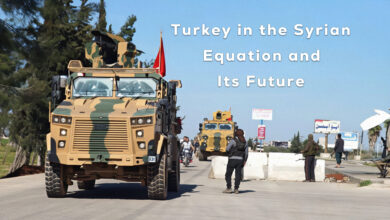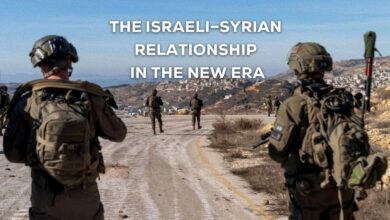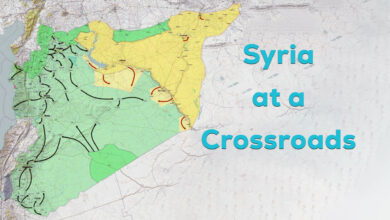Popular resistance or Iranian war?
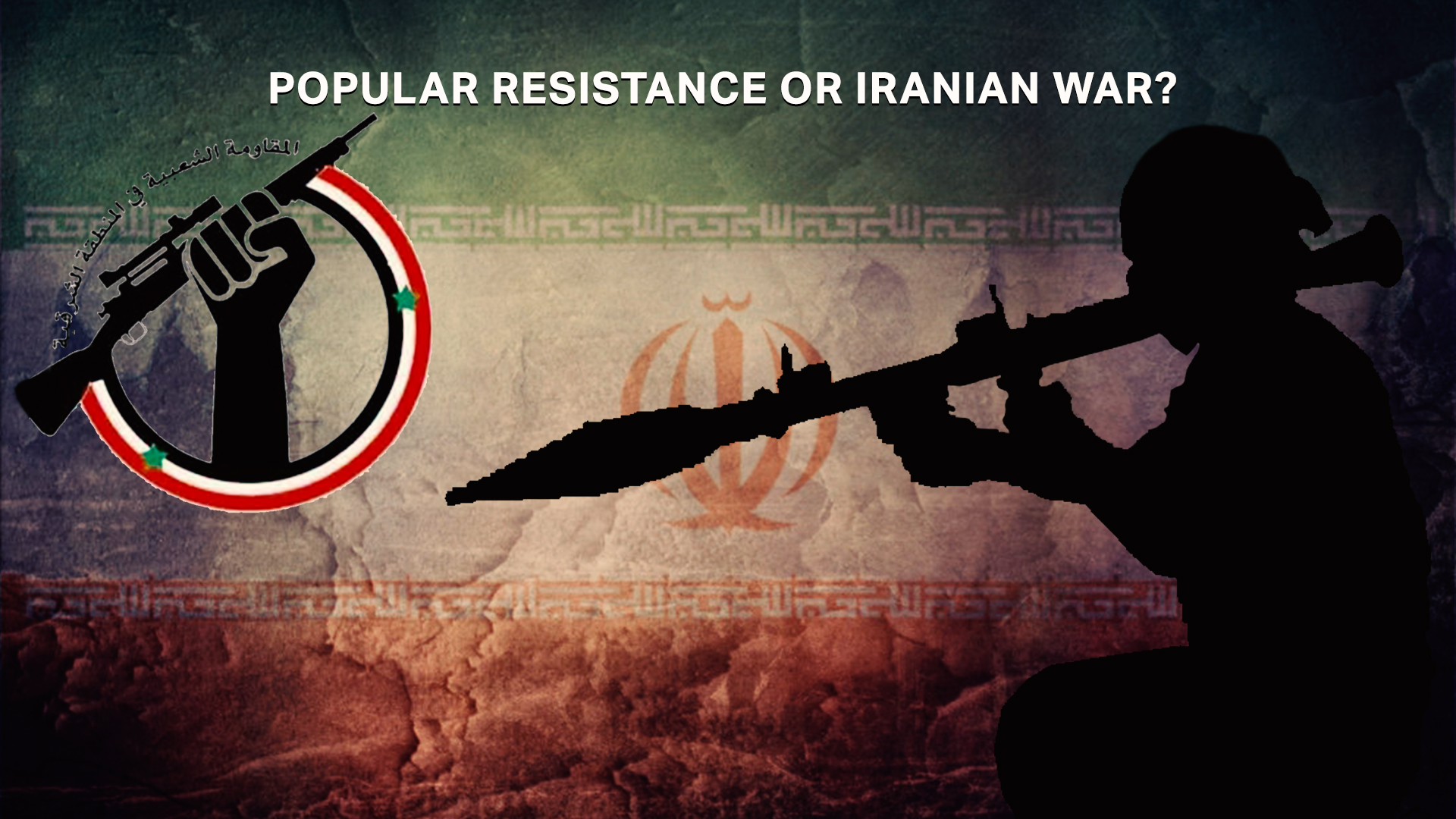
Reports
Every day, targeting operations spread in different parts of northeast Syria that affect civilian figures related to the Autonomous Administration of North and East Syria (AANES), military and security figures affiliated with the Syrian Democratic Forces (SDF), and the headquarters of the US forces. As a result, talks about “popular resistance” militias has become widely circulated.
Who are these militias?
In February 2018, an armed group of members of some Arab tribes and clans in the city of Raqqa, announced, through a video statement posted on social media, a new formation known as “Popular Resistance in the Eastern Region” in order to resist the “American occupation”, as it claimed. In its statement, the group called the people of Raqqa to support it against “the American occupier and all who are allied with it by all possible means,” concluding the statement with an old Iranian chant: “Death to America.”
This ostensibly “pro-Assad” group is increasingly following the footsteps of the Islamic Republic of Iran, as it is said that the group has close ties with Iran. Perhaps this scene brings to mind the Islamic movements that were founded in Iraq in 2003 during the interference of the US. Iran had a great contribution to establishing and strengthening some armed Shiite factions such as Badr Organization, al-Mehdi Army (militias loyal to Muqtada al-Sadr and later, the Popular Mobilization Forces), which were used by Iran to participate in specific operations against the American forces in Iraq at the time, and they used to raise the slogan “Death to America” as well.
The roots of these militias
With the beginning of controlling the city of Raqqa by ISIS in 2014, families were transferred from the city by the Syrian regime to the capital, Damascus, where a number of training centers were opened, and the percentage of those joining these centers from the people of Raqqa reached very high numbers, under the pretext of “Our Raqqa,” so that one of the intelligence organizations known as the “Syrian Arab Army Brigades” was formed and raised the slogan “peaceful, secret, civilian, and the percentage of error in it must be zero.” These cells entered the city of Raqqa and carried out operations with great precision within ISIS gatherings, as they targeted military and security forces. It was also able to raise the regime’s flag over a number of institutions at that time.
The activity of these militias did not stop even after the liberation of Raqqa from ISIS by the SDF and the US-led Global Coalition, as it carried out several operations targeting the SDF and the Internal Security Forces (Asayish), so that the series of targeting continues to the present day, but in another form. These militias established a similar formation under the name of “Popular Resistance in the Eastern Region”. It takes hitting American interests in the region as its primary goal, and has undertaken activities, including the assassination of military and security figures of the SDF, in addition to carrying out incitement activities and throwing paper leaflets calling on the residents of the SDF-held areas and the US forces to disobey.
Funding these groups
A report by Washington Institute for Near East Policy in 2019 sheds light on the role of the Syrian regime in supporting Iranian trends in the eastern region, as the Islamic Revolutionary Guard Corps (IRGC) penetrates the social fabric of the majority of the Sunni Arab population through a variety of social and economic activities, which helps these forces to impose Shiism on the cash-strapped local population, as the financial aid offered by the well-organized IRGC that outweighs the “anarchic and bankrupt” security structure of the Assad regime is attracting unemployed and poor Syrians. Also, some local tribes play a major role in implementing this Iranian agenda, for example, in areas such as Sabihan and al-Mayadin, the IRGC ordered tribal sheikhs to invite residents to attend events organized in Shiite Hussainiya, and local sources indicated that Saleh Muhammad Ismail al-Ba’aj, an official of the al-Ba’ajin tribe in al-Mayadin, is Iran’s main ally in spreading Twelver in cooperation with the Iranian Cultural Center in Damascus.
The IRGC is trying, in various ways, to control the Arab tribes to use them to serve its agendas and continue their suffering in light of the crisis in the country. The processes of Shiism that have spread among the Sunni tribes, through which Iran is trying to implant sectarian policies in that region and confront the Global Coalition and the SDF, are far from tribal originality.
The several bombings that took place in the cities of Raqqa, Tabqa and Deir ez-Zor in the recent period, were carried out by this group for several reasons, as after each operation, social media was posting ISIS claim for these operations, but what is noticeable is that all the statements were used for the Gregorian date instead of the Hijri one, which is contrary to the method used and still adopted by ISIS.
This is what Abdulkarim al-Hafil, one of the elders of the al-Akidat tribe, said earlier last year: “The popular resistance in the eastern region is against the American forces and the SDF.” He also indicated that the resistance carried out specific operations against the American forces in the oil fields of Omar and Koniko, stressing that “the resistance will continue and develop until it achieves its goals to defeat both the American and the SDF occupations and others.”
The popular resistance militia, ostensibly loyal to Assad and funded by Iran, is nothing but a security cell run by Iranian-Baath intelligence rooms to strike stability in the eastern region and create a state of fear among citizens. It also does not have a popular incubator, as it is based on the margin of democracy that the Autonomous Administration provides in the region (and the security grip laxness).
For example, the recent operations that were assigned to it, took place in light of the tension caused by the National Defense Forces (NDF) against the Asayish in northeast Syria. That is, their operations coincide with any opportunity that a security gap entails, so they seem relatively powerless in the normal circumstances of the region. Note that many of the operations attributed to it are relatively simultaneous with attacks launched by militias and organizations affiliated with Iran on the interests of the US and its allies, or when damaging targets of value to the IRGC, such as the recent events in al-Tay neighborhood in the city of Qamishli.
These militias published a statement announcing the continuation of the “resistance” and demanded the Arab members within the SDF to declare their defection and join the popular resistance. They also called on the Arab tribes and clans in the Jazira region to unite to confront the SDF. They also claimed that they had placed a military convoy of the SDF forces in a “tight ambush” in the northwestern countryside of Deir ez-Zor, adding that the operation came: “a support for our people in the Syrian Jazira and the heroes of the NDF in Qamishli.”
Perhaps all these events bring us back to an interview with the President of the Syrian regime, Bashar al-Assad, conducted by Russia 24 TV channel in 2020, in which he stated: “The popular anger will gradually escalate towards the American occupier and the groups working for its benefit in the eastern region. There will be resistance, and it is the national duty of the state to support any action that is done or carried out against an occupying power.” Some analysts interpreted this statement, that Assad will not put his army face to face against the American forces, but there is a possibility for sleeper cells to form in the name of popular resistance at some point, and they have experience in the nature of the region and its privacy.
This is what we saw in the operations carried out and are still being by these militias. It is not a coincidence that the interests of this group coincide with the efforts made by the Iranian forces in the region as well, which is striking the US interests and its allies. Also, this group has chosen a slogan for itself which is the hand and the weapon, which is one of the symbols that the Iranian forces use in their affiliated military formations in Iraq, Syria and Lebanon.
According to the data circulating on the scene, it seems that northeast Syria has become a hot spot for the emergence of movements aimed at striking the security and stability of this region. As evidenced by the statements and movements that are published and carried out by these militias, the targeting operations, whether of military or civilian symbols, will increase in the coming period and the region will witness more escalation.
